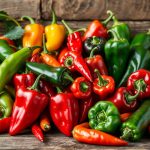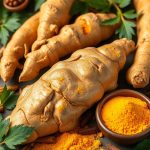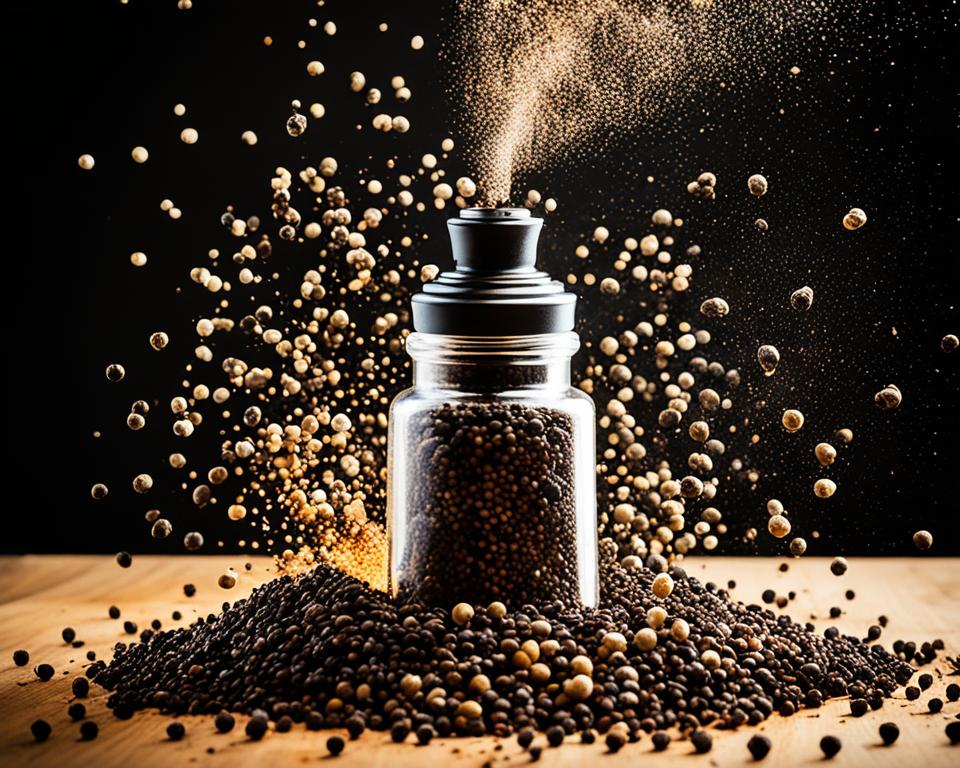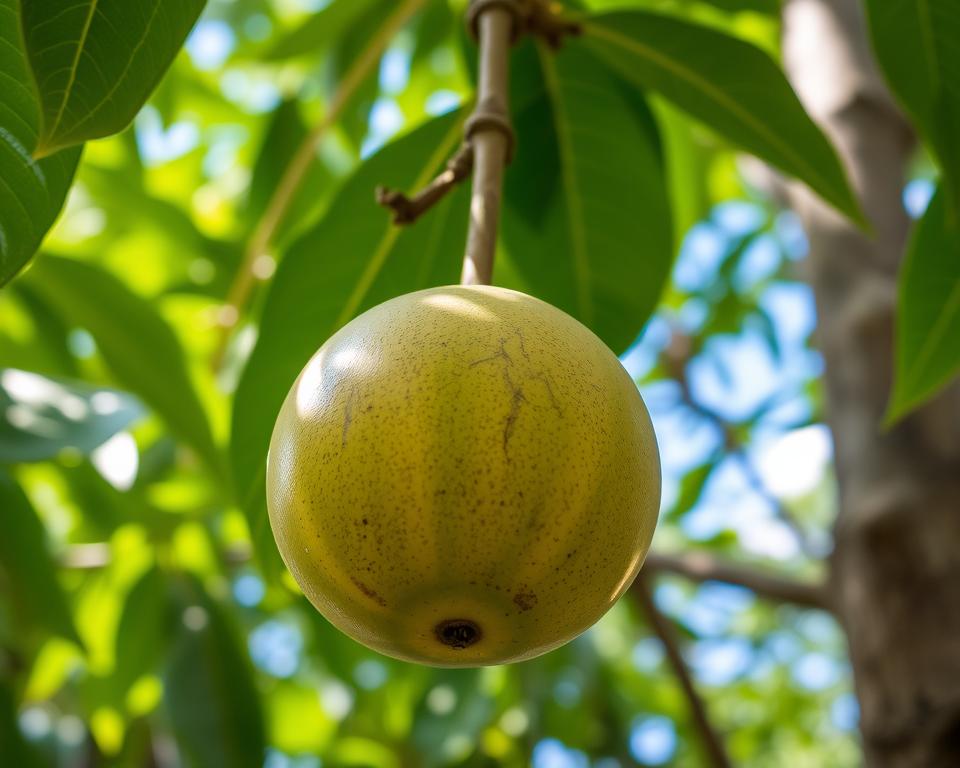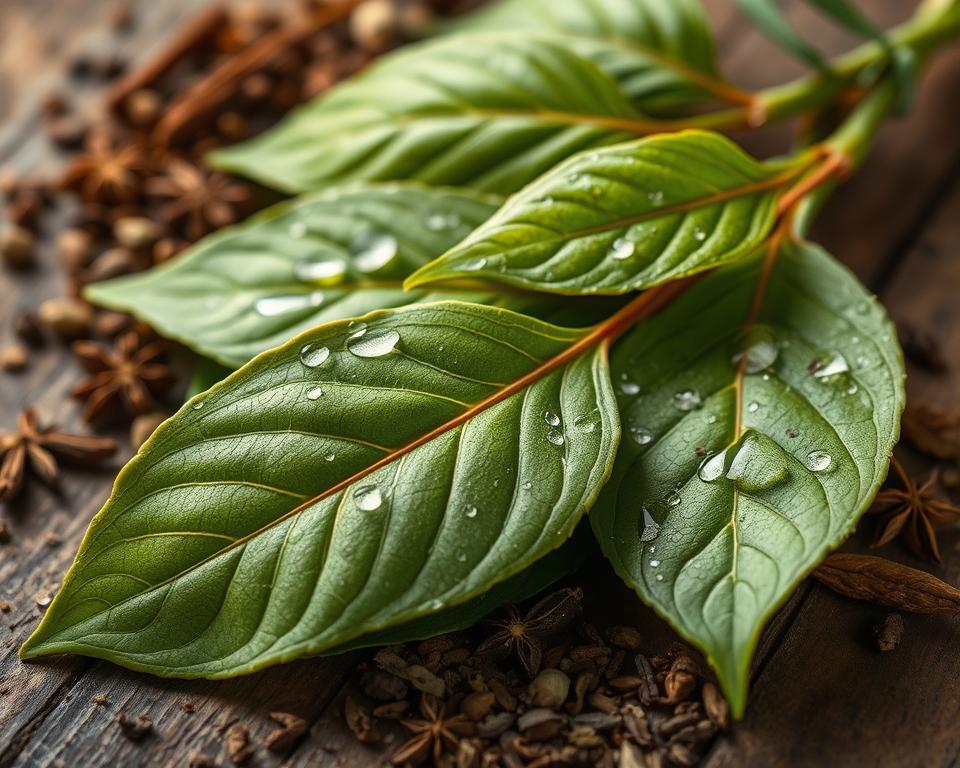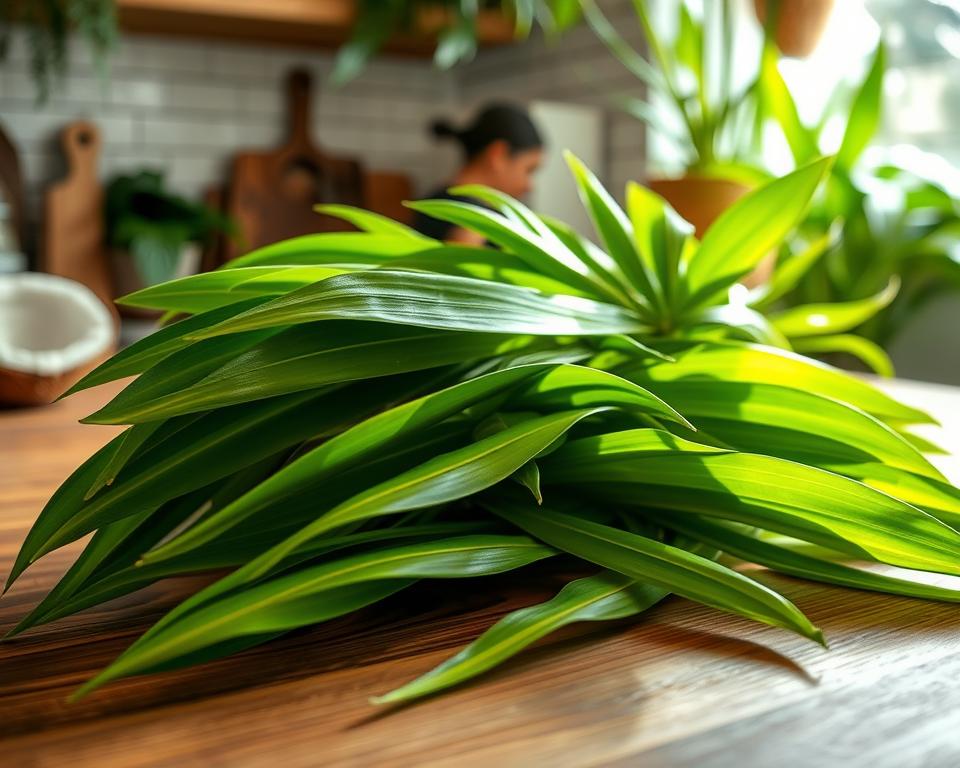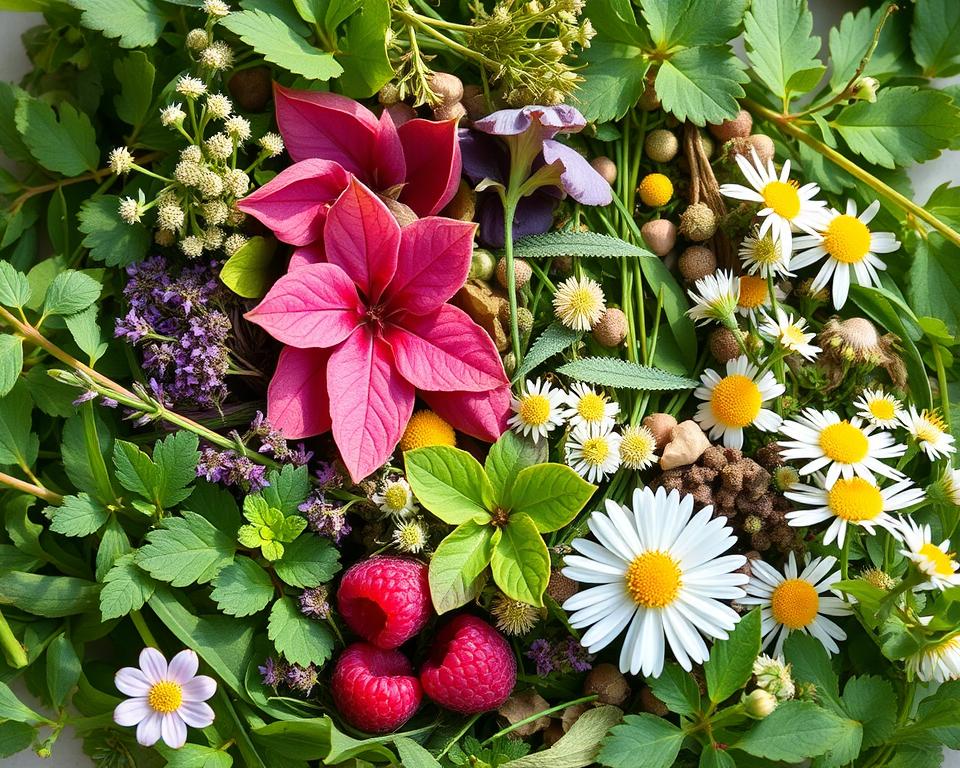Black pepper has been a key spice in kitchens for centuries. It comes from the piper nigrum plant’s berries. This spice makes many dishes taste better, from main courses to desserts. We’ll dive into its history, uses, and health perks to help you improve your cooking.
Read interesting things at : tosawakan
Key Takeaways
- Black pepper, derived from the piper nigrum plant, is a versatile spice used worldwide for centuries.
- The spice adds depth, complexity, and pungency to a variety of savory and sweet dishes.
- Exploring the history, cultivation, and culinary applications of black pepper can enhance your cooking abilities.
- Understanding the health benefits of black pepper, beyond its flavor, provides additional incentive to incorporate it into your diet.
- Proper sourcing and storage of premium black peppercorns ensures the best flavor and aroma.
The Ancient Spice: Unlocking the Mysteries of Black Pepper
The history of piper nigrum, or black pepper, goes way back to the Malabar Coast of India. This spice has amazed food lovers and traders for hundreds of years. It has left a big mark on the world’s food scene.
Origins and Historical Significance
Black pepper was highly valued from the early days, with roots in the Neolithic period. It was first grown in the Malabar region, on India’s southwestern coast. This spice was key in shaping global trade, becoming a must-have in ancient times.
Varieties and Cultivation
Today, black pepper comes in many types, each with its own taste. The famous Tellicherry and Malabar peppercorns come from the Malabar area. They are loved for their great taste and quality. These top-notch peppercorns are made with care, passed down through many generations.
| Pepper Variety | Characteristics | Region of Origin |
|---|---|---|
| Tellicherry | Bold, complex flavor with a distinct aroma | Malabar Coast, India |
| Malabar | Earthy, slightly fruity notes with a warm heat | Malabar Coast, India |
| Sarawak | Mild, slightly sweeter flavor profile | Sarawak, Malaysia |
| Lampung | Intense heat with a slightly bitter undertone | Lampung, Indonesia |
Today, growing piper nigrum has changed, but the Malabar region still uses old methods for the best quality. They pick, dry, and process the spice carefully, keeping its ancient charm alive.
“Black pepper has been a fundamental ingredient in Indian cuisine for millennia, lending its distinctive flavor to a vast array of dishes.”
Black Pepper: The King of Spices
Black pepper is often called the “King of Spices.” It’s known for making many dishes taste better. With its unique pungent aroma and heat, black pepper is a must-have in kitchens everywhere.
Black pepper is loved for its many uses. It goes well with both savory and sweet foods. Whether it’s in stews, marinades, baked goods, or desserts, black pepper adds a special touch. This spice makes simple dishes taste amazing.
Black pepper has also played a big role in history. Its aroma and pungency made it very valuable. This helped start global trade and changed how different cultures shared food and traditions.
| Characteristic | Description |
|---|---|
| Aroma | Distinctly pungent and earthy, with hints of citrus and floral notes |
| Flavor | Intensely spicy and aromatic, with a subtle underlying sweetness |
| Heat Level | Ranging from moderately pungent to fiery, depending on the variety |
This mix of aroma, flavor, and heat makes black pepper the top spice. It’s a key ingredient in cooking and a favorite among food lovers and historians.
Culinary Versatility: Endless Flavor Possibilities
Black pepper is a key ingredient in kitchens everywhere, known for its culinary versatility. It can make a wide range of dishes taste better, from savory meals to sweet treats. This spice brings out the best in many foods, offering endless flavor possibilities.
Savory Dishes and Marinades
Black pepper is a top choice for savory dishes. Its strong and aromatic taste adds depth to many foods. It’s great in sauces, soups, and marinades. Whether it’s grilled meats or roasted veggies, black pepper makes them taste amazing.
Baked Goods and Sweet Treats
Black pepper isn’t just for savory foods. It can also be used in baked goods and sweet treats. A little bit of black pepper can add a unique twist to cakes, cookies, and even chocolate desserts. This mix of sweet and spicy flavors is sure to delight anyone.
| Savory Dishes | Sweet Treats |
|---|---|
| Grilled Steak with Black Pepper Rub | Dark Chocolate Truffles with Black Pepper |
| Roasted Vegetables with Black Pepper Marinade | Spiced Pumpkin Pie with Black Pepper Crust |
| Creamy Black Pepper Fettuccine Alfredo | Lemon Cookies with a Hint of Black Pepper |
“Black pepper’s culinary versatility knows no bounds, making it a true star in the kitchen.”
Health Benefits: More Than Just a Flavor Enhancer
Black pepper is known for its amazing taste, but it’s also great for your health. It’s full of antioxidants and anti-inflammatory stuff that helps you stay healthy. This spice is a powerhouse that goes beyond just making food taste good.
Research shows that black pepper has something called piperine, which is good for your digestive system. Piperine helps your body use nutrients better. This is great news for anyone who wants to get more nutrients and boost their metabolism.
| Health Benefit | Scientific Evidence |
|---|---|
| Antioxidant Properties | Black pepper has lots of antioxidants like vitamin C, vitamin E, and carotenoids. These help fight off bad free radicals and protect against stress. |
| Anti-Inflammatory Effects | Piperine in black pepper can reduce inflammation. This might help with conditions caused by inflammation. |
| Digestive Support | Piperine makes nutrients easier for your body to use. This can improve how well your digestive system works. |
Adding black pepper to your cooking does more than just make food taste better. It brings health benefits to the table. Try using black pepper more often to support your health and make your meals both tasty and nutritious.
Sourcing and Storing: Ensuring Freshness and Quality
Getting and keeping black pepper fresh is key to its great taste. Black peppercorns are the “king of spices” and need special care. By choosing the best types and storing them right, you can make sure your dishes have that amazing black pepper taste.
Identifying Premium Black Peppercorns
It’s important to pick high-quality black peppercorns for the best taste. Look for Tellicherry and Malabar peppercorns from the Malabar Coast of India. These are bigger, darker, and taste more complex than regular black pepper.
- Tellicherry peppercorns: These come from Kerala and are hand-picked and sun-dried. They have a bold, sophisticated taste.
- Malabar peppercorns: From the Malabar region, these have fruity notes and a balanced heat. They work well in many dishes.
Choose peppercorns that are plump and shiny with a deep color. Stay away from those that look shriveled or faded. They might not be fresh or potent.
Proper Storage Techniques
Proper storage keeps black peppercorns fresh and tasty. Put them in an airtight container away from sunlight, heat, and moisture. Keep it in a cool, dry spot, like a pantry or spice cabinet. Don’t store black pepper near strong-smelling spices, as it can pick up their flavors.
With the right way to get and store black pepper, you can bring out its full flavor. This will make your cooking even better.
Pungent Perfection: Unleashing the Aroma of Black Pepper
Mastering the art of preparing black peppercorns is key to culinary success. The right grinding techniques and tools can bring out its unique aroma and flavor. Whether you like a coarse or fine grind, getting it right can take your dishes to the next level.
Grinding Techniques and Tools
Grinding black pepper is crucial for its full flavor. You can choose from different methods to get the perfect texture and taste for your dishes.
- Mortar and Pestle: Grinding peppercorns by hand with a mortar and pestle gives you total control over the size of the grind. This method releases the aroma and pungent flavors, making it great for seasoning at the table.
- Pepper Mill: A pepper mill, whether manual or electric, grinds peppercorns efficiently. You can adjust the settings to get a coarse or fine texture, from cracked pepper to a powder-like consistency.
- Spice Grinder: For a super fine grind, a spice grinder is essential. These devices quickly turn whole peppercorns into a powdery seasoning, ideal for baking, rubs, and marinades.
Choosing the right technique and tool is important. But the secret to bringing out the aroma and pungent flavor of black pepper is grinding it fresh before use. This ensures the best flavor and aroma in your dishes.
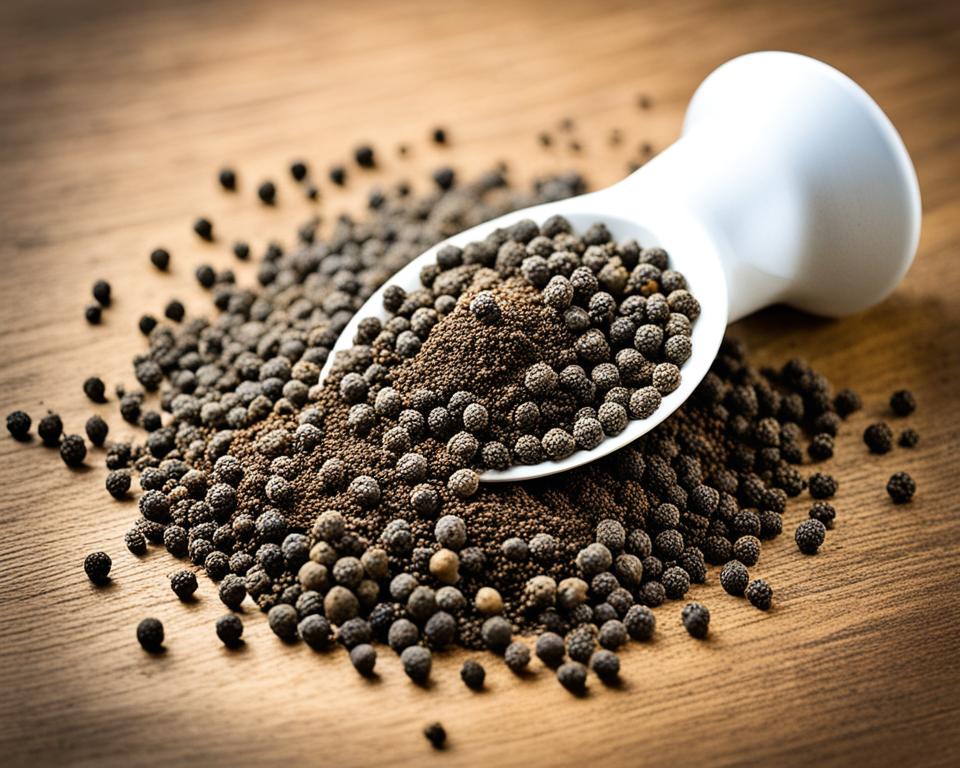
Cultural Significance: Black Pepper’s Global Journey
Black pepper’s journey through history is filled with deep cultural meaning. It went beyond just being a spice. The Spice Trade made it a global star, changing how people cook and taste food around the world.
Spice Trade and Culinary Influences
The Spice Trade linked the East and West, spreading black pepper everywhere. This spice was a big deal, shaping the food ways of many cultures.
From ancient Egypt and Greece to big Asian empires, black pepper was a big deal. It was more than just a spice; it was a sign of wealth and power. This made trade grow, mixing cultures and cooking styles.
| Region | Culinary Impact |
|---|---|
| Ancient Rome | Black pepper was a status symbol and used extensively in Roman cuisine, from savory dishes to sweet confections. |
| Medieval Europe | The scarcity and high cost of black pepper made it a luxury item, leading to its association with the elite classes. |
| Indian Subcontinent | Black pepper has been a fundamental spice in Indian cooking for centuries, imparting its distinctive flavor to a wide range of curries, lentil dishes, and rice preparations. |
Today, black pepper is still a big part of many cuisines. From West Africa’s aromatic stews to Southeast Asia’s fragrant curries, it’s a key spice. Its cultural significance and culinary influences keep it vital in the global spice trade.
Cooking with Black Pepper: Tips and Tricks
Mastering the art of cooking with black pepper is a skill. It’s known as the king of spices. With it, even simple dishes can become a feast for the taste buds. Here, we’ll share tips and tricks to make the most of black pepper in your cooking.
Adding black pepper at the right time is key. Sprinkle it on meats, veggies, and other ingredients before cooking. Or, add it near the end to keep its strong flavor and aroma.
It’s important to balance the strength of black pepper. Start with a little and taste as you go. Add more until it’s just right. Mix it with garlic, herbs, and citrus for a perfect blend of flavors.
- Try different grind sizes for various textures and tastes. A coarse grind gives a crunchy feel, while a fine grind blends in smoothly.
- Use a good pepper mill or grinder for fresh, consistent pepper. Freshly ground pepper tastes amazing.
- Black pepper is versatile. Use it in marinades, rubs, baked goods, and even desserts.
| Cooking Technique | Tips for Using Black Pepper |
|---|---|
| Sautéing | Add black pepper towards the end of the cooking process to preserve its bold flavor and aroma. |
| Roasting | Toss vegetables, meats, or even nuts with black pepper before roasting for a delicious, caramelized crust. |
| Baking | Incorporate black pepper into doughs, batters, and spice blends to add a subtle warmth and complexity to baked goods. |
Learning to cook with black pepper opens up a world of flavors. It can take your dishes to new heights. Embrace the power of this spice and start your culinary journey.
“The secret to good cooking is not really a secret at all – it’s all about the quality of the ingredients and the love and care you put into the process.”
Black Pepper Pairings: Complementary Flavors
Black pepper is more than just a spice. It can make many dishes taste better on its own. When you mix it with other herbs, spices, and foods, you open up a world of new flavors. This lets you try new things and make your cooking even better.
Herbs and Spices
Black pepper goes well with many herbs and spices. Try it with thyme, rosemary, or oregano for a mix that’s both complex and balanced. It’s great for meats, veggies, and sauces.
For something sweet, mix it with cinnamon, cloves, or nutmeg. This adds a special touch to baked goods and desserts.
Ingredients and Dishes
- Boost your roasted vegetables with black pepper, olive oil, and herbs.
- Grind black pepper over grilled or seared meats to bring out their flavors.
- Add black pepper to marinades and dressings for a bold taste.
- Put black pepper on creamy soups or mashed potatoes for a nice contrast.
- Try black pepper in baked goods, like cookies, breads, or even chocolate desserts.
There are endless ways to pair black pepper. By trying these flavors together, you can be more creative in the kitchen. You’ll enjoy every bite more.
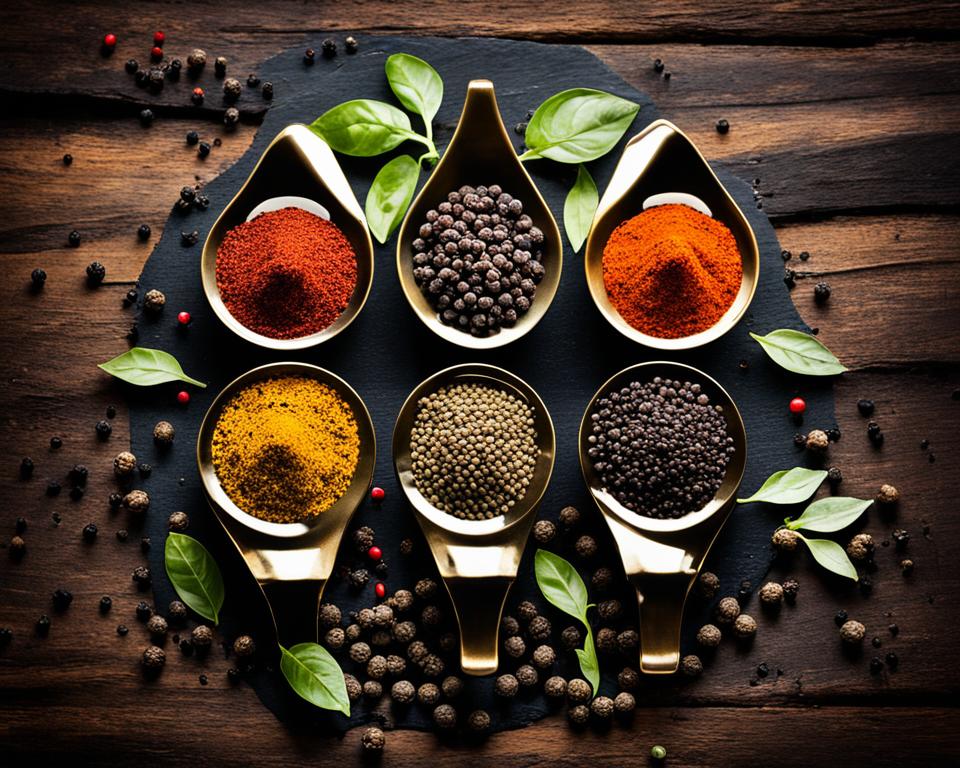
Black Pepper Alternatives: Exploring Other Pungent Options
Black pepper is the top spice for adding heat, but there are many other spices to try. If you want to try new flavors or spice up your cooking, this guide is for you. It introduces spices that can replace or work well with black pepper.
White pepper is a great choice if you like black pepper but want something different. It’s made from the same berries but without the outer husk. This gives it a milder taste but still packs a punch. Use it in sauces, soups, or marinades for added depth.
Szechuan pepper comes from China and has a unique taste. It has a citrusy smell and numbs your tongue. It’s perfect for Asian dishes, especially with soy, garlic, and ginger.
- Try smoked paprika for its smoky and earthy taste as a black pepper substitute.
- Add the pungent and slightly sweet flavor of ground mustard seeds to your recipes.
- Use Aleppo pepper for its complex and fruity notes in Middle Eastern dishes.
There’s more to pungent spices than just black pepper. Don’t be afraid to try new spices and find exciting flavors for your cooking.
Tellicherry and Malabar: The Finest of the Finest
In the world of black peppercorns, Tellicherry and Malabar are top choices. They come from the Malabar Coast of India. These peppercorns are known for their high quality, rich aromas, and great taste.
Tellicherry peppercorns are big and have a deep, earthy taste. They grow in the Tellicherry region of Kerala. After drying, they get even more aromatic and complex. This makes them a top spice with a strong yet sweet flavor and a gentle heat.
Malabar black peppercorns have their own unique taste. They grow in the sunny Malabar Coast. Farmers harvest and dry them carefully to keep their quality high.
Tellicherry and Malabar black peppercorns are all about quality. They are chosen, processed, and packed with care to keep their flavors and smells. Adding them to your cooking can make your dishes taste amazing.
“Tellicherry and Malabar black peppercorns are the crown jewels of the spice world, offering unparalleled depth and complexity that will transform any dish.”
When you start cooking, look for the best tellicherry, malabar, and premium peppercorns. They will take your cooking to the next level.
Conclusion
This guide has taken us on a journey through black pepper’s history, its use in cooking, and its health benefits. It’s known as the “King of Spices” for good reason. From its roots in the Malabar Coast of India, it has traveled the world, touching many cuisines.
Now, you know how to pick, store, and use black pepper in your cooking. This knowledge lets you make your dishes more exciting. As you try new recipes, let black pepper add a burst of flavor to your meals.
If you love cooking or are just starting, this guide has given you great tips. Use what you’ve learned to make dishes that are both tasty and memorable. Let black pepper’s story inspire you to cook with passion and creativity.




